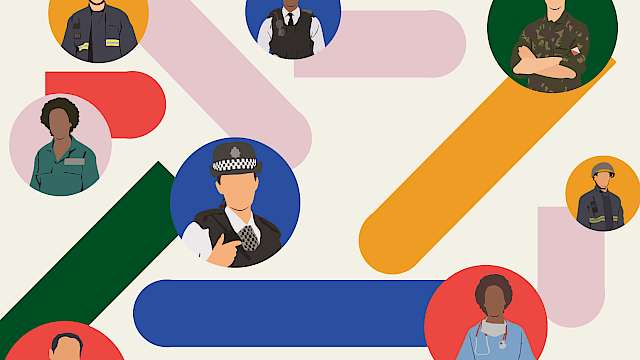Over the last decade, the Emergency Services in the UK have embarked on a significant journey of organisational change to achieve greater interoperability between the Police, Fire and Ambulance Services.
Interoperability is defined as a shared system of technology and teamwork build upon trust, identification, flexibility, goals and communication. It ensures smooth collaboration between organisational sub-teams when operating as a collective group.
Spearheading this journey of organisational change is JESIP – the cross-disciplinary team of interoperability experts from the emergency services and the Home Office.
Implementing organisational change is inherently challenging. The perception and evaluation of change efforts vary significantly among individuals, organisations, and social groups, meaning the same change efforts can promote both success and failure simultaneously.
The complex multi-professional framework of the UK Emergency Services offers a unique case study for understanding the intricacies of organisational change and how such change is perceived.
To evaluate organisational change, we spoke with expert commanders from across the Emergency Services about their experiences of interoperability. Specifically, we were interested in hearing about instances where interoperability had been challenged, to identify why JESIP might not have worked and to generate solutions for the future.
The key obstacle to successful interoperability was the principle to implementation gap. JESIP’s strategies worked well in theory, but their execution was hindered in practice.
- At the macro or systemic level, insufficient funding hampered interoperability efforts. Particularly, joint training was impeded due to financial constraints, limiting organisations’ capacity to engage effectively.
- At the meso or organisational level, incompatible existing organisational structures posed challenges. For example, differing perceptions of risk hindered joint decision-making, reflecting conflicting role-specific demands across response agencies.
- At the micro or interpersonal level, commanders described how stress and pressure derailed interoperability through interpersonal difficulties. Principles worked on paper, but the reality of a real-world emergency made interoperability challenging.
Despite these challenges, we uncovered positive transformations linked to JESIP, including improved communication and structured information sharing across organisations. Valuable insights into interpersonal dynamics were also shared, highlighting the significance of trust, identities, and having an effective leader who actively promotes interoperability.
Drawing on our findings, we recommend a multifaceted approach to bridge the principle to implementation gap.
- Metacognitive skills training can increase individuals’ awareness of their own emotions and beliefs around trust and identities, enabling smoother collaboration dynamics.
- Financial investment is crucial to support lasting and impactful systematic change.
- A commitment to funding acknowledges the value of interoperability and its vital role in safeguarding our communities.
By embracing these strategies, we can collectively bridge the principle-to-implementation gap, fostering cohesive and efficient, collaboration within and between our Emergency Services.
For further reading on this topic, you can view the related short report below:
Copyright Information
As part of CREST’s commitment to open access research, this text is available under a Creative Commons BY-NC-SA 4.0 licence. Please refer to our Copyright page for full details.
IMAGE CREDITS: Copyright ©2024 R. Stevens / CREST (CC BY-SA 4.0)






